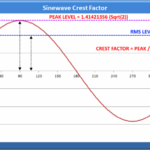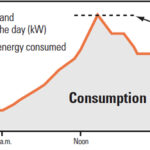What is Swell Voltage in electricity?
Swell voltage is a temporary increase in the voltage level of an electrical system. This increase can be caused by a variety of factors, including lightning strikes, sudden loss of load, or switching of large loads. When the voltage level exceeds the normal operating range, it can result in overvoltage conditions that can cause damage to electrical equipment and appliances.
For example, if a sudden swell voltage occurs in a home, it can cause light bulbs to burn out, electronic devices to malfunction, and motors to overheat. In industrial settings, swell voltage can damage sensitive equipment and cause costly downtime.
Effects of Swell Voltage?
Swell voltage can have several effects on electrical equipment and appliances, depending on the magnitude and duration of the voltage change. Some of the effects of swell voltage are:
Equipment Damage: When the voltage level exceeds the equipment’s design limits, it can cause damage to components, including insulation breakdown, arcing, and overheating. This can lead to equipment failure and costly repairs or replacements.
Reduced Equipment Lifespan: Overvoltage conditions caused by swell voltage can reduce the lifespan of electrical equipment by causing wear and tear on components, leading to premature failure.
Electrical Fires: Overvoltage conditions can cause arcing and sparking in electrical contacts, which can result in electrical fires.
Data Loss: Overvoltage conditions can cause data loss in computer systems and other electronic devices, leading to a loss of important information and costly downtime.
Flickering Lights: Overvoltage conditions can cause lights to flicker or burn out, leading to inconvenience and the need for frequent replacements.
Safety Risks: Overvoltage conditions can pose a safety risk to people working on or around electrical equipment, particularly in high-voltage systems.

What happen when Swell Voltage increases?
If the swell voltage is increased beyond the normal operating range, it can cause overvoltage conditions in the electrical system. Overvoltage conditions can have several effects on electrical equipment and appliances, including:
Overheating: When the voltage level exceeds the equipment’s design limits, it can cause overheating of components and damage to the equipment.
Arcing: Overvoltage conditions can cause arcing and sparking in electrical contacts, which can damage the contacts and the equipment connected to them.
Reduced lifespan: Overvoltage conditions can reduce the lifespan of electrical equipment by causing insulation breakdown, component degradation, and other forms of damage.
Electrical shocks: Overvoltage conditions can also pose a risk of electrical shocks to people working on or around the equipment.
Therefore, it is important to prevent swell voltage from exceeding the normal operating range to avoid damage to electrical equipment and ensure the safety of people working with or around the equipment.
How To Prevent Swell Voltage?
To prevent swell voltage, it is important to maintain a stable voltage level in the electrical system. Here are some measures that can be taken to avoid swell voltage:
Install Voltage Regulation Equipment: Voltage regulation equipment such as transformers, voltage regulators, and capacitors can help regulate the voltage level in the electrical system and prevent overvoltage or under voltage conditions.
Use Surge Protectors: Surge protectors can be installed at electrical outlets and equipment to protect against voltage spikes caused by swell voltage.
Implement Power Conditioning: Power conditioning equipment such as uninterruptible power supplies (UPS) and voltage stabilizers can help maintain a stable voltage level in the electrical system and protect against voltage fluctuations.
Ensure Proper Wiring: Proper wiring practices can help prevent swell voltage by reducing electrical resistance and minimizing voltage drops in the system.
Perform Regular Maintenance: Regular maintenance of electrical equipment and systems can help detect and prevent voltage fluctuations caused by faulty equipment or wiring.
Monitor Voltage Level: Continuous monitoring of the voltage level using voltage monitoring devices can help detect voltage fluctuations and take preventive measures.





